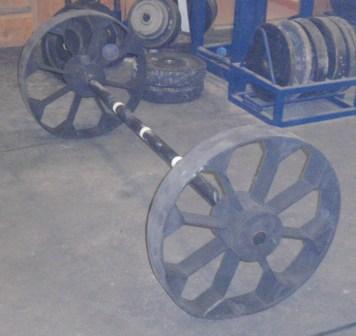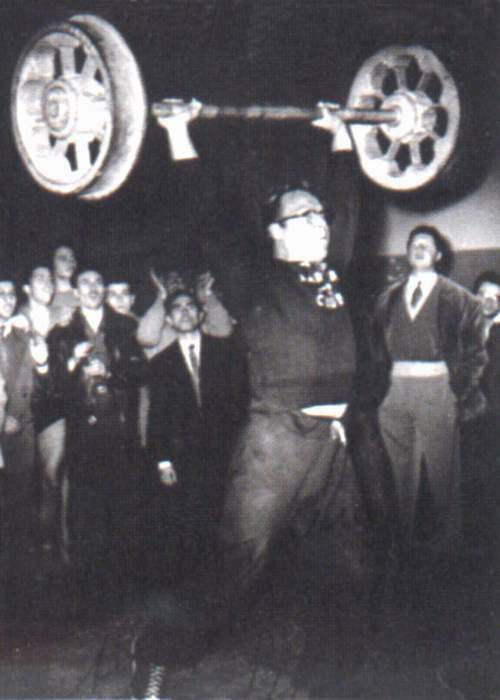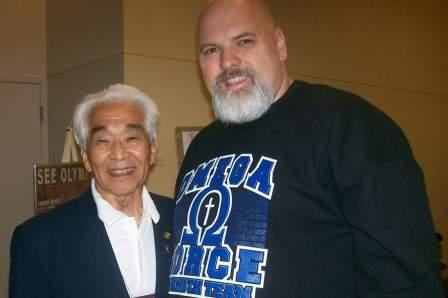The Dino Gym’s Replica of the Apollon Wheels
by Al Myers
The Apollon Wheels have a mythical attraction to them. What makes a better Challenge Barbell than TRAIN WHEELS! I have heard the stories of Louis Uni (Apollon) lifting these giant Train Wheels is his performances, and can only imagine how impressive he must have looked doing it. I only wish there were some pictures of him lifting them!!
Several people have made replicas of the Apollon Wheels (AW). I have seen lots of pictures of them. What I don’t understand is why most replicas don’t resemble the original Apollon Wheels in the slightest. Just look at the pictures of them and you will see what I am saying. Most have rims that are way wider than the original Apollon Wheels. The hub design is not even remotely the same with some. Some replicas are plated with shiny chrome. The spokes are even turned wrong in some! Sometimes I question whether they even used the original’s AW measurements! Most replicas that have been made look much bigger than the original AW.
I have wanted to undertake this project for quite some time – ever since I read in MILO several years ago (September 2004) an article about the Hollie Brothers and their quest in making an Apollon Wheel replica. They did it right, and tried to make a replica as close to the original as possible. I had decided then, that when I took on this project, that would be my goal also. Several design issues immediately became a problem. First, only a “handful” of measurements have been recorded for the original AW and published. I read all the resources and tried to use what I considered the most accurate information. I have several pictures of the original AW – and had to extrapolate from these pictures and estimate some measurements – like the length of the gussets and width and diameter of the hub. The one thing I did NOT want to be the same with my replica as the original AW was the weight. The original AW weighed 366# (or 365# as some sources report). I did not want to make it that heavy. I don’t need any more heavy doorstops! I wanted to make a replica that I could lift and train with! So I decided my design weight goal would be around 250 pounds. The final weight of my AW replica turned out to be 240 pounds – which is ideal.
This project turned out to be a big success. I was very pleased how my Apollon Wheels Replica turned out. It’s nice to have something like this in the gym – when new lifters join their eyes are immediately drawn to this huge 2″ bar containing railroad car wheels as the plates. It’s at that time I ask, “Have you heard the story about Apollon and his Challenge Barbell?”


